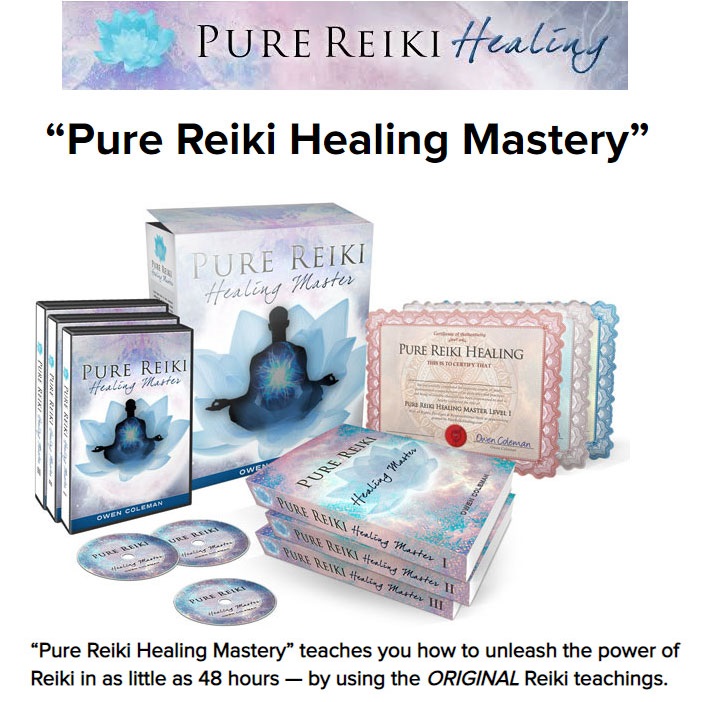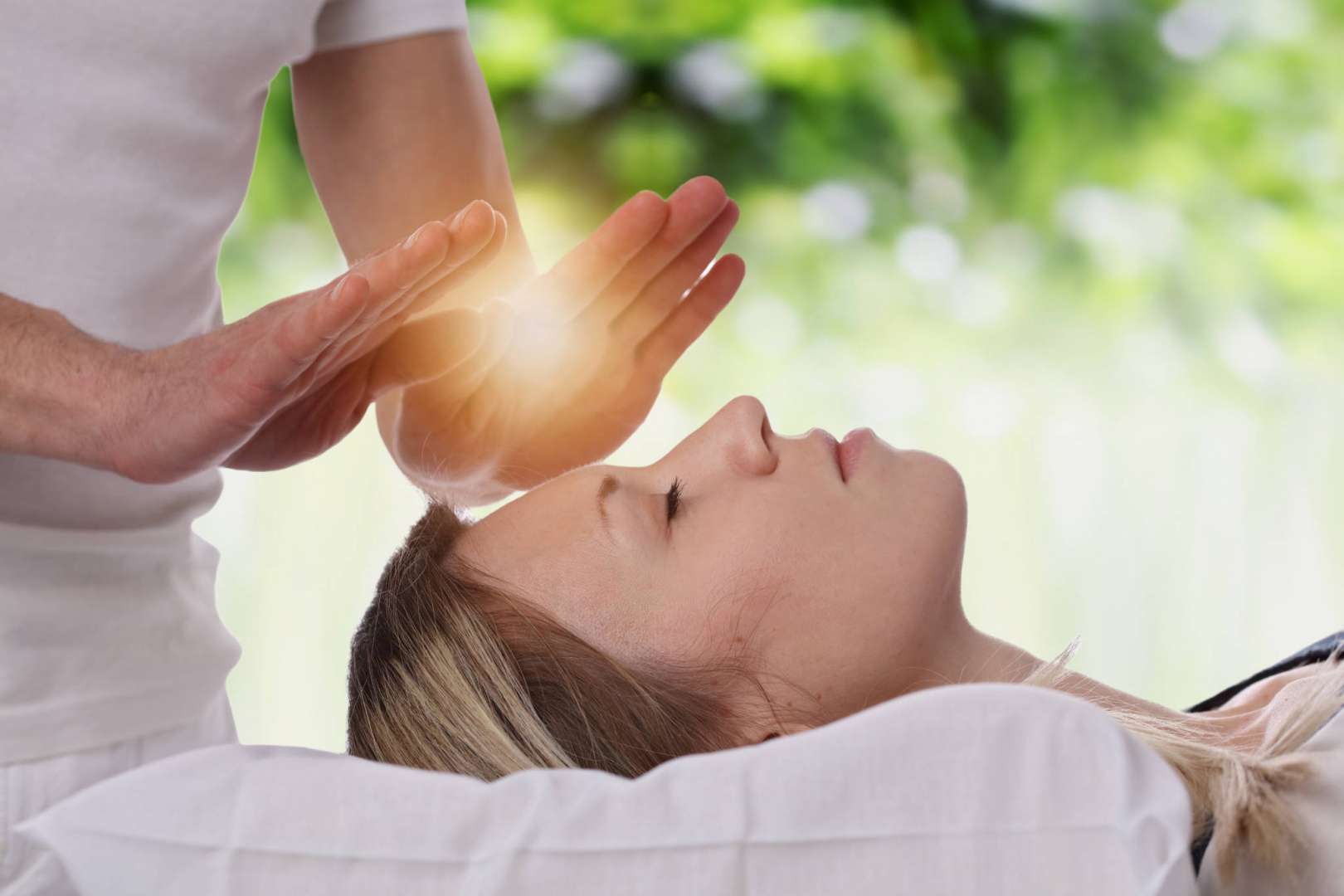What is reiki massage
Reiki is a Japanese healing method belonging to the energy approach. In this article, you will discover what this therapy is, its principles, history, benefits, practice...
In Japanese, Rei means universal and includes matter, soul and spirit. Ki (or Qi) refers to the vital energy flowing within us, as understood by oriental medicines such as Traditional Chinese Medicine and Ayurveda. Reiki is therefore the bringing or reconnecting of the "universal energy" and our own "life force" in order to awaken a dynamic healing process.
The main principles
Reiki belongs to the so-called energetic approaches, in which the practitioner intervenes on the vibratory field of the person. This skill is usually associated with meditation techniques or spiritual practice disciplines as it has existed, in one form or another, in most cultures throughout history. But Reiki differs from these traditional practices in that it is devoid of any religious ties and does not require a particular spiritual path.
The concepts underlying energy therapies such as Reiki have theoretical similarities with various models proposed in modern physics1. Of course, none of these models have been experimentally linked to medicine or clinical outcomes.
The models proposed in bioelectromagnetism, in quantum physics or according to the supercord theory, for example, are consistent with oriental writings. These suggest that an extremely subtle vibration could constitute the substrate of matter as we know it. It may therefore have a role to play in health and disease.
In a Reiki session, the practitioner channels universal energy and, using esoteric symbols and sacred sounds, transmits it by laying hands on different parts of the patient's body. The hands do not have to come into direct contact with the patient's body. The transmission of energy could even be done remotely. The universal energy would also have its own "intelligence", which would allow it to go exactly where the patient needs it and not cause any undesirable side effects. The practitioner's personal energy is never supposed to interfere in the process.

The benefits of Reiki
Au cours des dernières années, au moins 4 revues systématiques ont été publiées sur les effets thérapeutiques du Reiki2-5. Cependant, la qualité méthodologique des recherches réalisées jusqu’à maintenant est déficiente. Les preuves scientifiques sont donc actuellement insuffisantes pour affirmer que le Reiki est une approche thérapeutique efficace en pratique clinique.
Decrease stress and depressive symptoms. Reiki is used by some practitioners to reduce anxiety at the time of surgeries or in nursing or retirement homes, for example. It has also been reported to help reduce stress and periods of depression in the elderly1.
Improve the quality of life for people with cancer. Several studies have shown the beneficial effect of Reiki on fatigue, pain, anxiety and the quality of life of individuals suffering from cancer.
Decrease memory and behavioral problems. A study conducted on patients suffering from either Alzheimer's disease or mild cognitive impairment showed an improvement in mental function as well as a decrease in memory and behavioural problems among Reiki group participants. However, these results should be considered preliminary due to the absence of a placebo group (Reiki mimed, for example) and the small number of participants.
Reducing pain: several studies have shown the beneficial effects of Reiki on pain. A randomized study of individuals undergoing wisdom tooth extraction showed that post-intervention Reiki sessions significantly reduced the pain experienced7. 7 In another study of women presenting for hysterectomy, Reiki reduced the use of pain medication and improved the pain of the participants.
Contributing to rehabilitation following a stroke. A clinical trial evaluated the effectiveness of Reiki as an adjunct to the rehabilitation protocol in hospitalized stroke patients6. The results indicated that Reiki would have a limited and selective effect on mood and energy levels. However, it would not have a significant effect on functional independence in daily activities such as eating, dressing, movement, etc., nor on depression.
Reiki Training
There are 3 levels of learning the practice of Reiki, although some schools also talk about a 4th level (see Books, etc.). The teaching, which includes ritualized initiations (see Articles of interest), is normally transmitted by a master who himself has received the initiations following a chain going back to Mikao Usui, the founder.
The primordial element of the 1st level is the "opening of the channel". From then on, the connection with the "primordial consciousness" would become accessible at all times and forever. The student also learns to focus on the energy he is now channeling and on the imbalances that manifest in his own body (on the physical, emotional, intellectual and spiritual levels). He begins by healing himself before healing others. The teaching of this 1st level is often given in a weekend workshop. It is generally recommended to practice for at least 3 months before moving on to the next level.
In the 2nd level, the student learns to manipulate 3 sounds and 3 specific symbols in order to mentally access Reiki energy and use it for specific purposes (healing, harmonization, distance work, etc.).
The 3rd level, called Master level, is for those who wish to teach this technique and transmit the initiations. It is not necessary for a practitioner to have completed this level since this step is not intended to improve one's ability to heal. Many practitioners therefore do not do it.
The cost of the initiations is very variable. Some schools say that the price must be high, which would guarantee the seriousness and sincere motivation of the candidates. Others want Reiki to be accessible to the greatest number of people and ask for much lower prices, in the order of a few hundred dollars. One can also be initiated at a distance through websites or DVDs (see Books, etc.). These practices are of course controversial.

A Reiki session
Nowhere in the world is Reiki a regulated profession. Various organizations have tried to further structure the training, but without much success. It is therefore difficult, as a client, to know who you are dealing with. One must rely on word of mouth and the exercise of personal judgment when meeting with a practitioner. Do not hesitate to ask for references, what tradition they are associated with, what their clinical experience is, how long they have been trained. Be wary if he promises the moon or if he denigrates other approaches, whether classical or alternative.
Some organizations maintain registers of initiates, practitioners and teachers of Reiki. These include the International Association of Reiki Professionals and the Canadian Reiki Association (see Sites of Interest). However, as there are no official regulations allowing for any kind of certification, the existence of such registers has only a relative value. They do, however, provide information on who in a given region practices or teaches Reiki.
Course of a session
In general, a Reiki treatment is carried out as follows. The practitioner will ask the patient, who remains clothed, to lie down on a massage table, first on his or her back, then on his or her stomach. Using a dozen different hand positions, he will first place them gently on the patient's head for 2 to 5 minutes, then move them to the torso, then to the back. When there is contact, the pressure of the therapist's hands is always very light. Many patients report that the sensation felt when the hands are applied may be comparable to the feeling of a hot water bottle.
A typical session lasts from 45 to 75 minutes, although occasionally a shorter period may be used. It is said that the treatment can also be done at a distance, with the practitioner visualizing the patient and the patient placing himself or herself in a receptive state.
During the session, the patient generally reaches a state of great relaxation. At the end of the treatment, he or she may have felt himself or herself in a deep sleep or, on the contrary, may have experienced unusual sensations such as colorful visual impressions or evocation of past lives. It is estimated that, for chronic illnesses, it takes at least 4 complete sessions to feel the benefits of Reiki.
History of Reiki
It was a Japanese man named Mikao Usui (1865 to 1926) who formulated the bases of what was to become Reiki in Japan at the beginning of the 20th century. His quest would have begun after his students asked him what exactly was the healing technique that Jesus Christ used to perform the miracles reported in the Gospels.
He would also have met a Japanese scholar who had converted to Christianity, but would never have graduated in theology himself. The reference to Christianity is said to have been introduced by Hawayo Takata, who was the first to introduce Reiki to the West. She would have created this "distortion" to make the approach more acceptable to Westerners.
In Japan, Mikao Usui's teaching was formalized by one of his students, Chujiro Hayashi. He would have received from Usui the authorization to emphasize the therapeutic aspects of Reiki by isolating them from asceticism and spiritual practice. But according to several modern researchers, Hayashi has exceeded his powers by teaching Reiki, which he has slightly transformed. Usui would have rather entrusted his succession to Jusaburo Ushida who, upon the death of the master, became the president of the organization that Usui had founded (or which would have been founded at that time), the Usui Reiki Ryoho Gakkai. This organization is still active in Japan today.
What is certain is that in 1937, Reiki was introduced in the West, in Hawaii, by Hawayo Takata, who had passed through the clinic that Hayashi had opened in Tokyo. She was treated for respiratory and abdominal problems. Delighted with the results, she studied with the master, and then back in Hawaii, she opened her own clinic there.
Hawayo Takata died in 1980, after having trained 22 Reiki masters in North America. It was at this time that the technique spread to most Western countries. Some of these masters founded their own lineages and associations by adding their own colors and principles.
In the last few years, other forms of Reiki directly derived from the Japanese teachings of Ushida or Hayashi, without going through Takata, have emerged in the West. So we find today two main branches of Reiki, one Western, coming from Takata, and the other directly Japanese.
Within these two main currents, innumerable schools of thought coexist. Some claim to respect the purest esoteric tradition, others advocate a greater openness. Moreover, since the "secret" symbols were first revealed in a book in 1992, many practitioners consider that the esoteric aspect of Reiki no longer has its place - and in any case would not have been desired by Usui.
According to some allegations, Reiki is an old traditional technique that Mikao Usui rediscovered during a satori, a spiritual awakening experience of Zen Buddhism. Indeed, traces of healing approaches through the laying on of hands can be found in the tantra tradition of Tibetan Buddhism, as well as in the Vedas of Hinduism that preceded it.
However, there is no such evidence in any of the medical systems that have evolved from them, whether Tibetan or Ayurvedic. In fact, Usui was not a physician, but a mystic who engaged in rigorous spiritual asceticism. From what is known about Buddhist and Vedic practices, healing through the laying on of hands and various other phenomena could result from the spiritual work of the follower. They were "desirable side effects" but were not considered an end in themselves, and followers were advised to show a certain detachment from them.
Usui and his successors would thus have opened the door to two major transformations in the world of mysticism and in the medical field:
• While retaining the mystical aspect of initiations, rituals and secret symbols, they removed from the approach any requirement for a personal spiritual approach.
• They introduced mysticism into medical practice: healing from "energetic" interventions and training that did not consist of a technical type of teaching, but a series of ritualized initiations transmitted from master to disciple.


